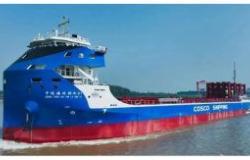There are now numerous space debris “crowding” low Earth orbit, becoming a real threat: here are the risks and possible solutions.
L’low earth orbit it is now overcrowded, and not only with satellites useful to humanity: the most dangerous presence is that of space debris, real garbage that is not disposed of in any way, remaining even for millennia at heights where it can cause enormous risks. In short, they became one threat to the Earth. Let’s find out what the risks are and possible solutions to the problem.
Space junk: the debris problem
How can there be junk in space? It’s much simpler than you might think: old rockets, spacecraft that have completed their mission, broken satellites and even objects lost by astronauts are transformed into debris that remain in orbit around the Earth for a very long time. NASA itself has given a definition of space debris: “any human-made object in orbit that no longer serves a useful purpose, including spacecraft fragments and retired satellites.” In short, the concept is clear. But how much is this waste in space?
Probably a number you would never have imagined: it is estimated that, in the so-called low earth orbit (i.e. below 2,000 km altitude), there are approximately 34 thousand debris larger than 10 cm, 900 thousand debris between 1 and 10 cm and more than 128 million debris between 1 mm and 1 cm. A real problem, especially because fragments smaller than 10 cm cannot be traced through monitoring operations, and at the speed at which they move they can cause serious damage. The biggest risk is that of one collision with operating satellitesspacecraft and even the Earth itself.
Due to the large amount of debris present in low Earth orbit, the latter it is becoming unusable: Soon there will be no space left for additional satellites, nor for any other fundamentally useful human activity. However, even though the whole world has something to lose, no one seems to be particularly interested in remedying this problem. Space is a no man’s land, there is no regulation that allows the adoption of rules to combat waste in orbit. And apparently the companies working on a space level they prefer to spend money on maneuvers to avoid debris – which significantly increase costs – rather than worry about resolving the situation.
Possible solutions to adopt
So what remains to be done? NASA, in collaboration with other space agencies, has drawn up some guidelines which could prove useful in reducing the amount of debris in space – or at least preventing its further formation. It would be possible, for example, to modify the design of satellites to avoid collisions (which in turn produce fragments), or add reserve fuel to spacecraft to ensure that, once their function is finished, they are able to exit low Earth orbit before being abandoned. Of course, cleaning the space remains a much more complex task.
In fact, we should plan vehicles for active debris removal, equipped with cutting-edge tools such as nets, robotic arms or collecting balloons. Tools that require a considerable expense for their creation and operation, obviously. But it is really essential to proceed: it is estimated that debris in orbit can last a few days below 200 km altitude, up to 1,000 years at an altitude of 1,000 km and even up to 50 thousand years at a height of 2,000 km.





